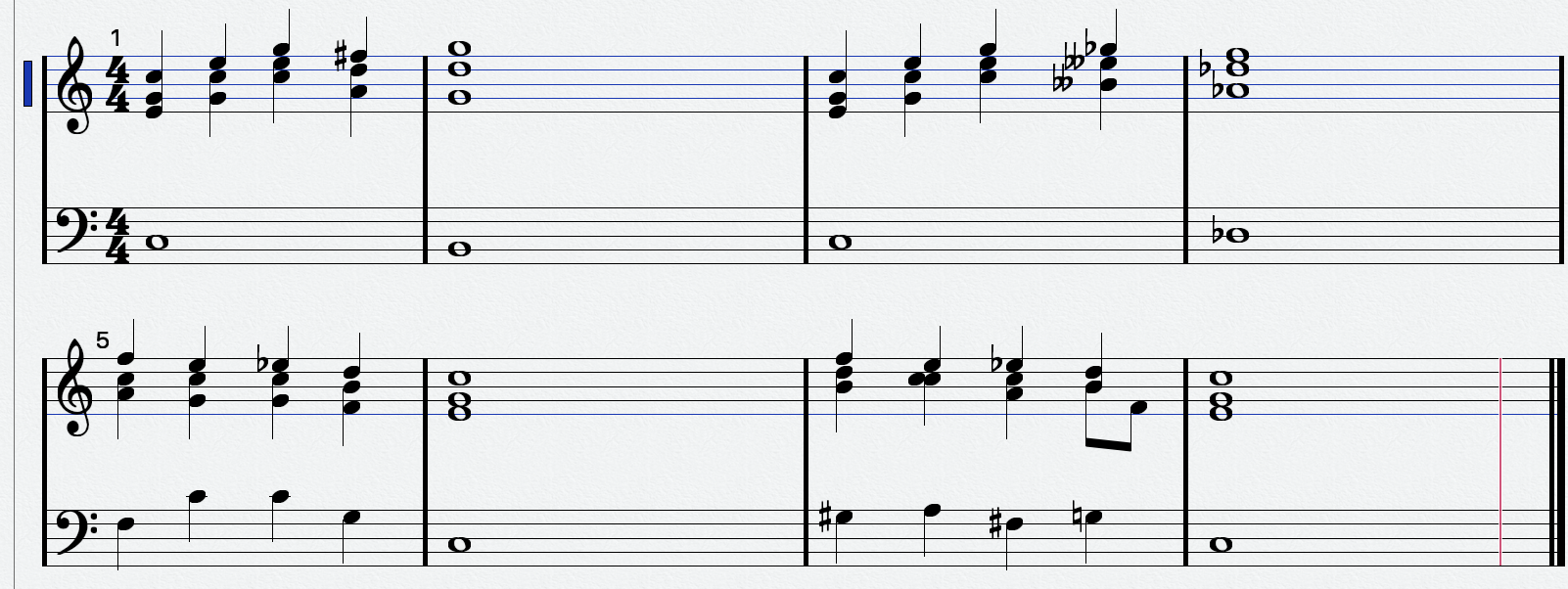In terms of classical theory, the third measure has a D7 chord, V/V, being enharmonically reinterpreted as an E♭♭ augmented sixth chord, which allows it to serve as a pivot to D♭. Enharmonic reinterpretation of this sort is not uncommon in the nineteenth century; it is sometimes shown to the reader with parenthetical notes.
(These are often smaller stemless solid noteheads to make it clear that they don't account for any time but are merely clarifying the function of the note they accompany. Unfortunately I cannot remember nor find any of the pieces I'm familiar with that use this technique, but this example does show that putting parentheses around an otherwise extra chord written with full-sized stemmed notes is indeed confusing: http://musictheory.pugetsound.edu/mt21c/EnharmonicModulationIntroduction.html)
The spelling given in the question is correct for the augmented sixth chord, but there are awkward intervals in both the inner voices from the preceding chord -- at least they are spelled awkwardly. To spell this according to classical theory, therefore, at least of the 19th century, you would probably want to write the chord as a D7 chord, following this in parentheses with the stemless E♭♭ augmented sixth chord.
Another option would be to spell measure 4 as a C♯ major chord, in which case you would add a parenthetical B♯ at the end of the left hand so as to spell the chord as a D(♮) augmented sixth.
But really, in the 20th and 21st century context, there's not a whole lot of reason to do this. It's more likely to increase confusion than to reduce it, compared with just spelling it as D7.

